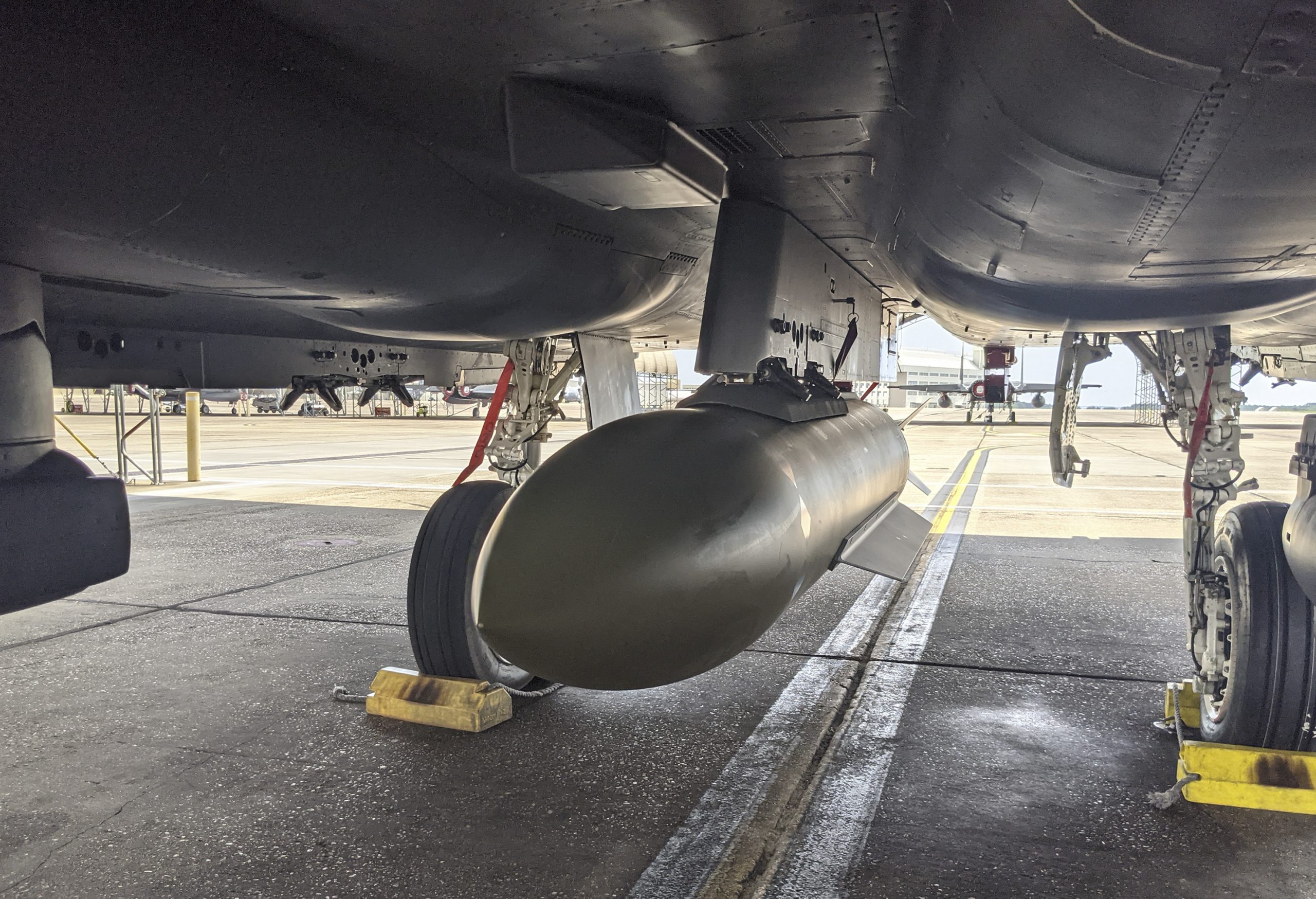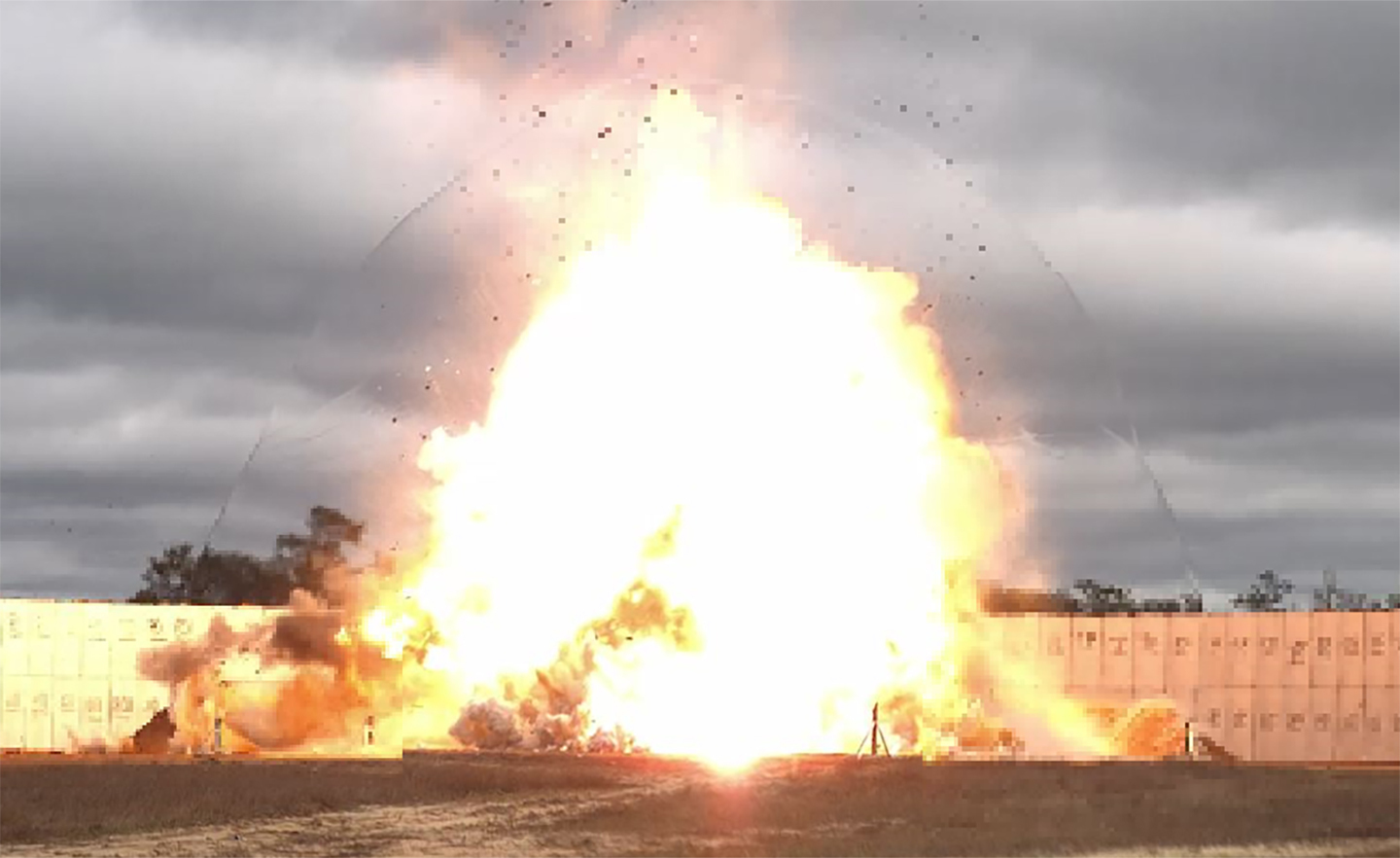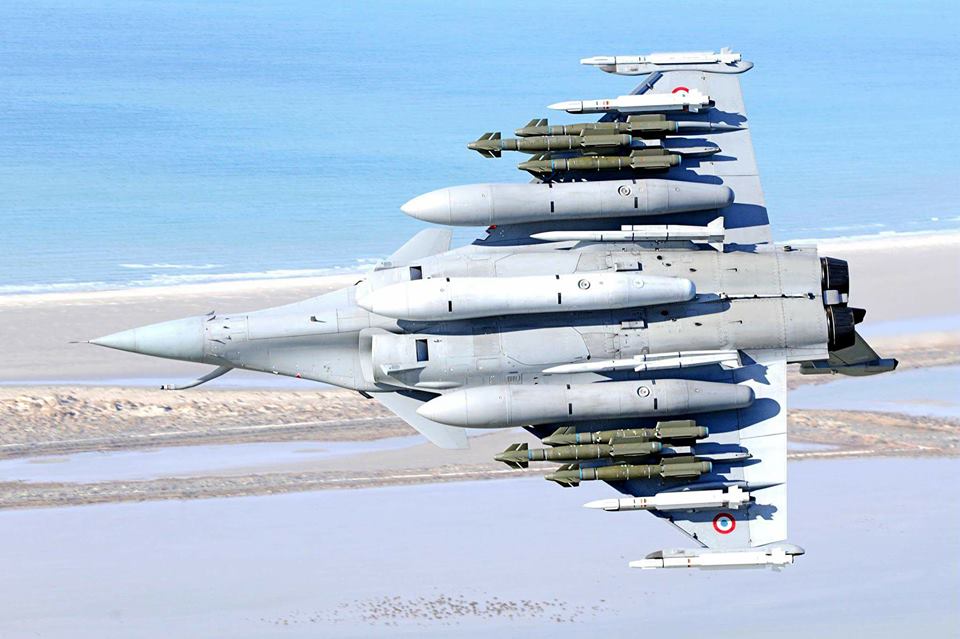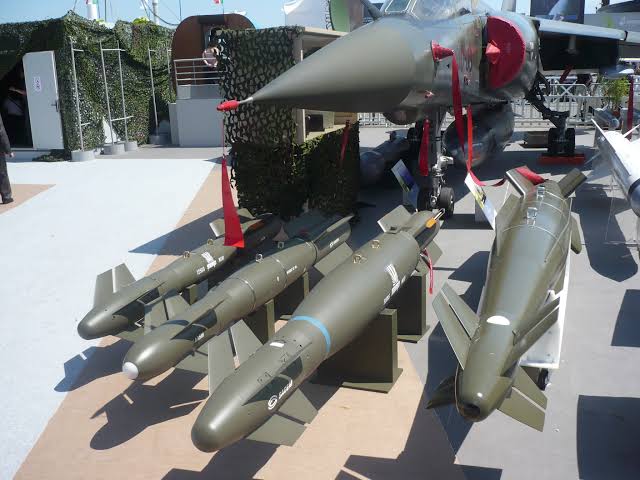The US tested a new bunker-buster bomb in October. This trial, which US Air Force has described as the “largest-ever arena test”, comes almost a year after France tested a similar weapon from its Rafale fighter jet.
Bunker-buster bombs are capable of penetrating deep into the earth or through a dozen feet of reinforced concrete before detonating. These bombs have allowed the modern and advanced Air Forces to target and destroy installations that would otherwise be difficult to access, making them an indispensable asset.
In October this year, the US Air Force conducted successful trials of a new, powerful bunker-buster bomb called the GBU-72. The bomb, which is designed to overcome and destroy fortified targets buried deep beneath the surface, typically beyond the range of most conventional munitions, weighed 5000 pounds (2267kg), as previously reported by EurAsian Times.

In December 2020, France tested its HAMMER missile weighing about 2204 pounds (1000kg) and the Indian Air force recently ordered the French missiles for induction on its indigenous LAC Tejas aircraft.
The USAF had informed at the time that several tests were conducted, including an aerial drop of the 5000-pound GBU-72/B from a 96th Test Wing F-15E Strike Eagle combat aircraft at the Eglin Air Force Base range in Florida.
The Advanced 5000 Pound Penetrator or Advanced 5,000 Pound Warhead program, also known as A5K, was used to build and test the new weapon. The GBU-72 is touted to be the successor to the existing GBU-28 that bombed bunkers preceding the US invasion of Iraq.
The GBU-72 5K Penetrator
The GBU-72 carries an inertial navigation system supported by GPS in its tail section, which is a modified variant of the existing GBU-31/B’s tail unit.
The newer bomb features a pair of long fins on either side at the bottom, whereas the GBU-31 which it has been compared to has them attached to the center. The bomb’s lethality was tested using a lot of simulation and modeling during its development.

In an official press release, the USAF said, “The GBU-72 was developed to overcome hardened deeply buried target challenges and designed for both fighter and bomber aircraft. Lethality is expected to be substantially higher compared to similar legacy weapons like the GBU-28.”
The GBU-28, which has been succeeded by the GBU-72, was hastily created during the 1991 Iraq War after fears that the existing BLU-109/B bomb, would not be able to reach Iraqi command and control placed deep underground. The GBU-28 bomb is a huge metal mass that employs kinetic energy to penetrate the target region as it descends from the plane.

“Outwardly, the GBU-72/B itself looks essentially like an enlarged 2,000-pound class GBU-31/B Joint Direct Attack Munition (JDAM) precision-guided bomb configured with a bunker-buster warhead, such as the BLU-109/B or the improved BLU-137/B,” The War Zone said of the test. However, the GBU-72/B allows the air force to use it against targets that are too powerful for GBU-31/B bombs but don’t require the use of the more lethal GBU-57/B.
China, Iran, and North Korea all have underground nuclear facilities that the GBU-72 could exploit. Israel has also expressed its intent to buy these new missiles as it has been using the old GBU-28 bunker-buster bombs.
French HAMMERs
The 1,000kg model of the HAMMER was tested with a Rafale at the Cazaux flight test center in southwest France, which is run by the French defense procurement agency in December 2020.
With the exception of its Scalp cruise missile, which weighs roughly 1,200kg, the 1,000kg version of the HAMMER would be the biggest weapon to be deployed aboard the Rafale, as reported by The Week.

The Highly Agile Modular Munition Extended Range (HAMMER), a next-generation modular air-to-surface missile developed by the Safran Group, is the export version of the French Armement Air-Sol Modulaire (AASM). It has a range of over 70 km, making it perfect for attacking ground targets, according to the manufacturer Safran.
The HAMMER missile’s propulsion capability allows it to operate at low altitudes and in steep terrain. The AASM Hammer is compatible with a variety of conventional bomb bodies (125, 250, 500, and 1000 kg) and is self-contained and jam-resistant.
It is a fire-and-forget missile and has the capability to strike multiple targets at a time, both mobile and static. For a typical deep strike mission that it might have to carry, the missile uses single, double, or triple store adaptors, as well as Sagem’s Hemispheric Resonating Gyro, inertial / GPS hybridization.
Recently, India has placed an order for the HAMMER missile under the emergency route, as previously reported by EurAsian Times. India also uses the Israeli Spice 2000 bomb which it had deployed to destroy terrorist hideouts at Balakot in Pakistan in 2019.

The SPICE (Smart, Precise Impact, Cost-Effective) bomb comes from a family of standoff air-to-ground weapon systems. In May-June 2019, the Indian Air Force has signed a Rs 300 crore deal with Israel’s Rafael Advanced Defense Systems to procure a batch of SPICE 2000 guided bombs, according to PTI.
The HAMMER that entered service in the French Air Force in 2007 has been used in combat in Afghanistan and Libya to destroy enemy targets. However, the newly tested 1000kg variant is set to enter service only in 2022.
Russia, the arch-rival of the West also has its own bunker-buster designated as Kh-59MKM. It was showcased by Russia in the 2021 MAKS Air Show in July this year.
- Contact the author at sakshi.tiwari9555@gmail.com
- Follow EurAsian Times on Google News




